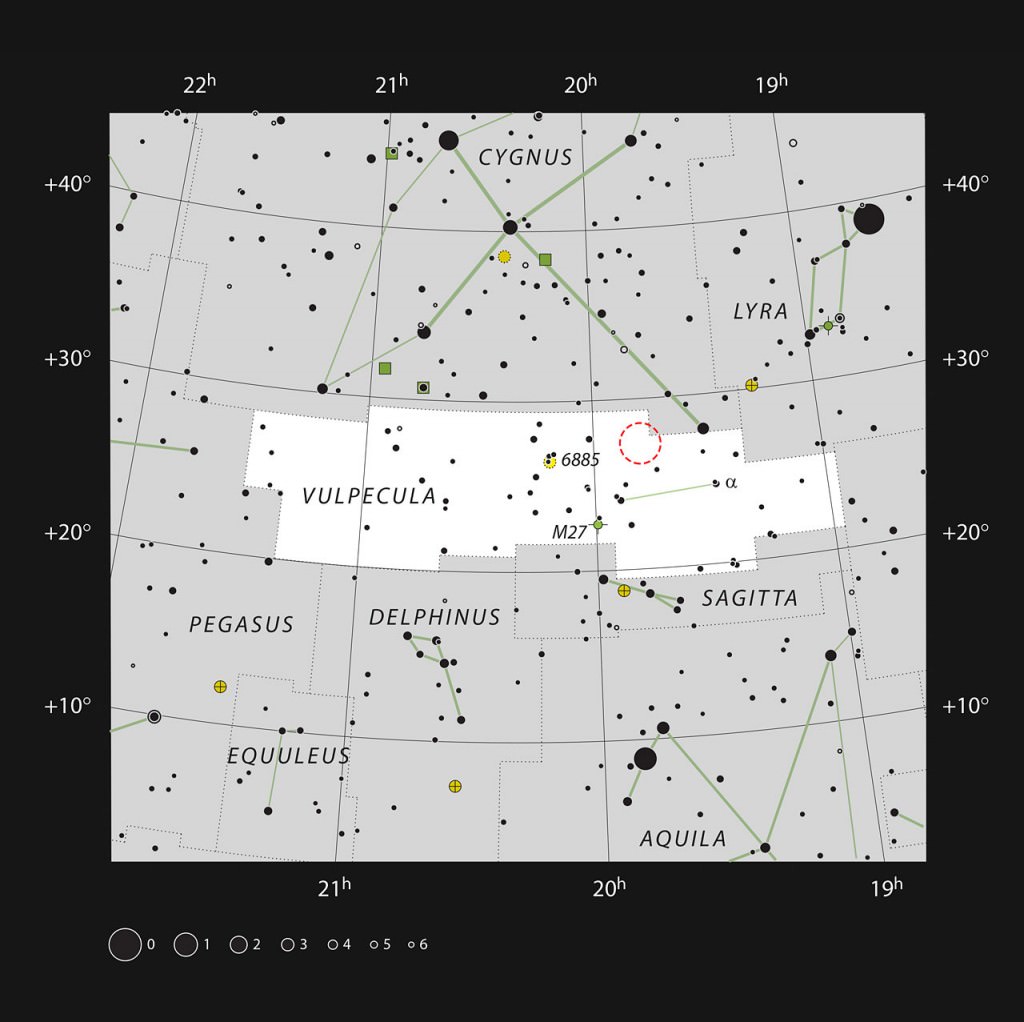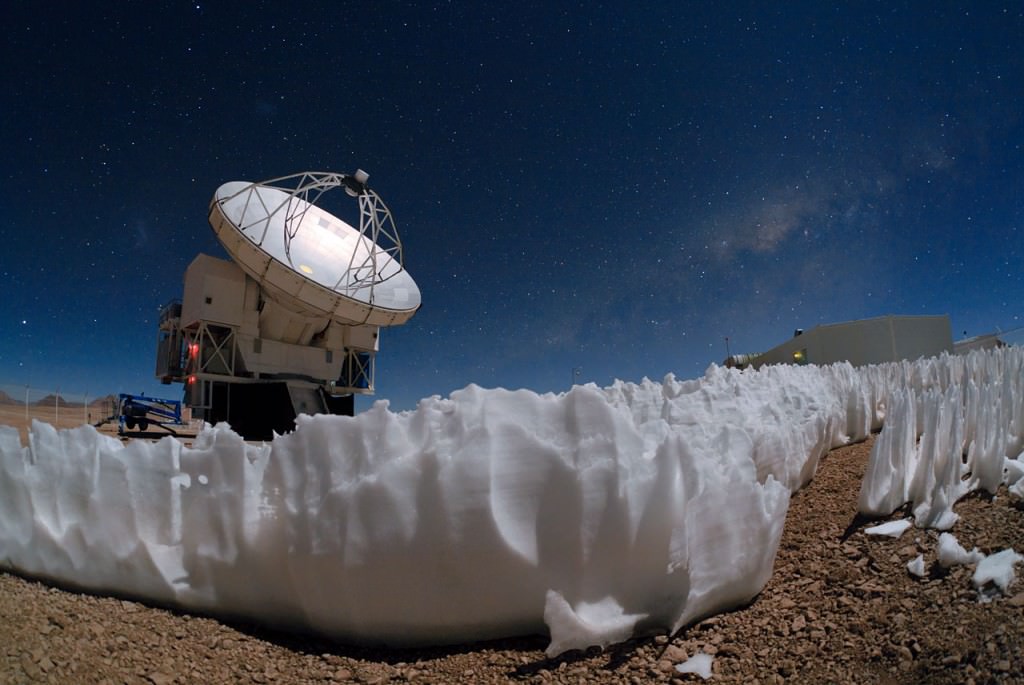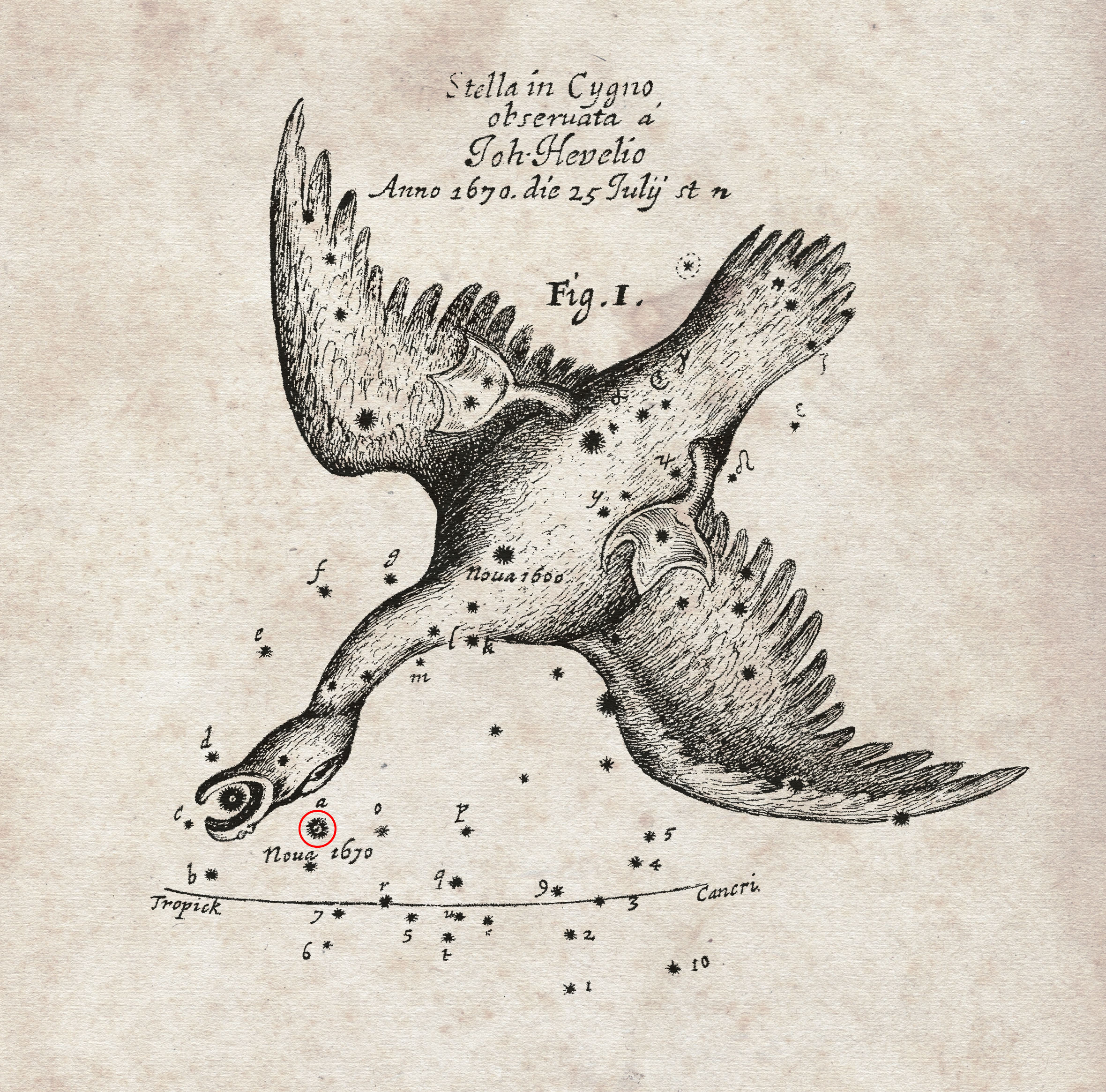It is a 17th century astronomical enigma that has persisted right up until modern times.
On June 20, 1670, a new star appeared in the evening sky that gave 17th century astronomers pause. Eventually peaking out at +3rd magnitude, the ruddy new star in the modern day constellation of Vulpecula the Fox was visible for almost two years before vanishing from sight.
The exact nature of Nova Vulpeculae 1670 has always remained a mystery. The event has often been described as a classic nova… but if it was indeed a garden variety recurrent nova in our own Milky Way galaxy, then why haven’t we seen further outbursts? And why did it stay so bright, for so long?
Now, recent findings from the European Southern Observatory announced in the journal Nature this past March reveal something even more profound: the Nova of 1670 may have actually been the result of a rare stellar collision.

“For many years, this object was thought to be a nova,” said ESO researcher Tomasz Kaminski of the Max Planck Institute for Radio Astronomy in Bonn Germany in a recent press release. “But the more it was studied, the less it looked like an ordinary nova—or indeed any other kind of exploding star.”
A typical nova occurs when material being siphoned off a companion star onto a white dwarf star during a process known as accretion builds up to a point where a runaway fusion reaction occurs.
ESO researchers used an instrument known as the Atacama Pathfinder EXperiment telescope (APEX) based on the high Chajnantor plateau in Chile to probe the remnant nebula from the 1670 event at submillimeter wavelengths. They found that the mass and isotopic composition of the resulting nebula was very uncharacteristic of a standard nova event.
So what was it?
A best fit model for the 1670 event is a rare stellar merger, with two main sequence stars smashing together and exploding in a grand head on collision, leaving the resulting nebula we see today. This event also resulted in a newly recognized category of star known as a “red transient” or luminous red nova.
Universe Today caught up with Mr. Kaminski recently on the subject of red transients and the amazing find:
“In our galaxy we are quite confident that four other objects were observed in outburst owing to a stellar merger: V838 Mon (famous for its spectacular light echo, eruption 2002), V4332 Sgr (eruption 1994), V1309 Sco (observed as an eclipsing binary before its outburst in 2008), OGLE-2002-BLG-360 (recent, but most similar to CK Vul eruption, 2002).Red transients are bright enough to be observed in nearby galaxies. Among them are M31 RV (first recognized “red variable”, eruption 1989), M85 OT2006 (eruption 2006), NGC300 OT2008, etc. Very recently, a few months ago, another one went off in the Andromeda Galaxy. With the increasing number of sky surveys we surely will discover many more.”
Though astronomers such as Voituret Anthelme, Johannes Hevelius and Giovanni Cassini all noted the 1670 nova, the nebula and suspected progenitor star wasn’t successfully recovered until 1981. Often cited as the oldest and faintest observation of a nova, Hevelius referred to the 1670 apparition as ‘nova sub capite Cygni,’ or a new star located below the head of the Swan near the star Albireo the constellation of Cygnus. Astronomers of the day also noted the crimson color of the new star, also fitting with the modern red transient hypothesis of two main sequence stars merging.

“We observed CK Vul with the hope to find some submillimeter emission, but were completely surprised by how intense the emission was and how abundant in molecules the gas surrounding CK Vul is,” Kaminski told Universe Today. “Also, we have ongoing observational programs to search for objects similar to CK Vul.”
Follow up observations of the region were also carried out by the Submillimeter Array (SMA) and the Effelsberg radio telescope in Germany. The Nova of 1670 occurred about 1,800 light years distant along the galactic plane in the Orion-Cygnus arm of our Milky Way galaxy, of which the Sun and our solar system is a member. We actually had a naked eye classical nova just last year in roughly the same direction, which was visible in the adjacent constellation of Delphinus the Dolphin.
Of course, these garden variety novae are in a distinctly different class of events from supernovae, the likes of which have not been seen in our galaxy with the unaided eye in modern times since Kepler’s supernova in 1604.

How often do stars collide? While rogue collisions of passing stars are extremely rare—remember, space is mostly nothing—the odds go up for closely orbiting binary pairs. What would really be amazing is to witness a modern day nearby red transient in the act of formation, though for now, we’ll have to console ourselves with studying the aftermath of the 1670 event as the next best thing.
“Recent estimates give one (merger) event per 2 years in the Milky Way galaxy,” Kaminski told Universe Today. “But we currently know so little about violent merger events that this number is very uncertain.”
Previously cited as a recurrent nova, the story of the 1670 event is a wonderful example of how new methods, combined with old observations, can be utilized to solve some of the lingering mysteries of modern astronomy.


The coordinates for Nova Vul 1670 are: RA: 19h 47m 37.88s
Dec: 27° 19′ 21.31″ With an absolute magnitude of 10.4 this object could possibly be visible in amateur telescopes? Anybody have an observation to report?
Correct; but remember, the absolute magnitude is if the object were just 10 parsecs away… CK Vul is much more distant. We had the same thought and asked the researchers, and the remnant nebula is much too faint to observe visually.
Just curious, why does the diagram at the top show the location on the opposite side of Cygnus’ head than the star chart further down?
Good catch… the map at the top is indeed inverted left to right from a true sky view (I can see some of the stars in Vulpecula and Sagitta that match up. Unsure if the 17th century map was constructed this way, or inadvertently inverted at some point online or in the scanning process, would be interesting to know. In research, what confused me was the historical records that said the nova occurred near the ‘head’ of Cygnus which I usually think of as Deneb, then I remembered that most classical diagrams show Cygnus the Swan flying southward.
The map must have been constructed that way, since the letters and words are all in the right order.
Good point… the original 17th century map must’ve been constructed inverted horizontally then.
Interesting possible answer to this mystery… many early star maps were made with a point of view external to the celestial sphere: http://www.berksastronomy.org/starcharts.htm